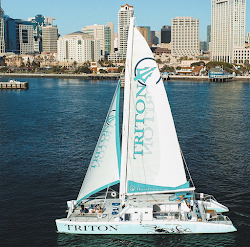Assemblymember Matt Haney and Sen. Scott Wiener's AB 342, introduced this week, aims to extend alcohol service hours to 4am on Fridays, Saturdays, and state holidays in designated "hospitality zones" - a move that could transform San Diego’s urban core into a nightlife powerhouse akin to New York or Chicago. Under the bill, cities would define these zones - walkable, well-lit areas near transit hubs - where bars and restaurants could opt for a new "additional serving hours license" starting January 1, 2026.
Haney, speaking at a Monday press conference, pitched it as a lifeline for post-pandemic recovery: "World-class cities have world-class nightlife. The opportunities for our small businesses, hotels, and restaurants are tremendous." For San Diego, that likely means downtown's bustling corridors, where the Gaslamp’s 16-block grid and East Village’s proximity to Petco Park already draw crowds well past midnight.
If enacted, downtown San Diego would be a prime candidate. The Gaslamp Quarter, with over 100 bars and restaurants, generates roughly $1 billion annually from food tourism, per the San Diego Tourism Authority, and often sees a chaotic 2am exodus when last call hits.
If enacted, downtown San Diego would be a prime candidate. The Gaslamp Quarter, with over 100 bars and restaurants, generates roughly $1 billion annually from food tourism, per the San Diego Tourism Authority, and often sees a chaotic 2am exodus when last call hits.
"There's a pushing out of large crowds with nowhere else to go," Haney noted, suggesting staggered closings could ease that rush - a scenario familiar to Gaslamp bouncers managing post-closing throngs. Business advocates like the California Nightlife Association, sponsoring the bill, argue it'd keep lights on longer, boosting safety and revenue as patrons linger rather than scatter.
San Diego's downtown associations would have a say in shaping these zones, tailoring hours to fit local vibes - perhaps extending service at hotspots like Barleymash or Mr. Tempo while sparing quieter edges. With California hosting the 2026 World Cup and 2028 Olympics in Los Angeles, proponents see it as a chance to showcase San Diego's nightlife to global visitors, many of whom spill south from LA for Padres games or Comic-Con, events that already strain the 2am cutoff.
San Diego's downtown associations would have a say in shaping these zones, tailoring hours to fit local vibes - perhaps extending service at hotspots like Barleymash or Mr. Tempo while sparing quieter edges. With California hosting the 2026 World Cup and 2028 Olympics in Los Angeles, proponents see it as a chance to showcase San Diego's nightlife to global visitors, many of whom spill south from LA for Padres games or Comic-Con, events that already strain the 2am cutoff.
The bill’s roots run deep - Wiener’s fifth stab at this since the early 2000s, after Gov. Jerry Brown’s 2018 veto citing "mayhem" concerns. Last year’s Intuit Dome exception for Clippers VIPs hints Gov. Gavin Newsom might be warming to broader changes, though AB 342’s fate hinges on Assembly committee review. Haney's tweaks - limiting it to weekends and holidays, targeting hospitality hubs - won over the California Association of Highway Patrolmen, previously wary of drunk driving spikes, shifting them to neutral after past opposition.
Not everyone's sold. Assemblymember Tom Lackey, a former highway patrol officer, slammed it as "the worst policy" he’s seen, warning of fatigued, drunk drivers between 2 and 4am - a risk San Diego's I-5 and I-8 corridors could face if late-night revelers hit the roads. Yet, downtown's transit options - trolley stops at Gaslamp and 12th & Imperial - might mitigate that, aligning with Haney’s vision of walkable zones.
For San Diego, this could mean a Gaslamp buzzing past its current curfew, with craft cocktail joints and dance floors humming until 4am. It's a shift that could pad small business coffers while challenging police to manage an extended party scene. Wiener calls the state's blanket 2am rule "absurd," pushing local control over Sacramento's grip, a sentiment that might appeal to San Diego's city leaders keen to flex their downtown's draw.
Will AB 342 pour new life into San Diego's nightlife or stir a cocktail of chaos? As the bill awaits its committee fate, downtown stands poised to test the theory - potentially turning last call into a late-night encore.
Not everyone's sold. Assemblymember Tom Lackey, a former highway patrol officer, slammed it as "the worst policy" he’s seen, warning of fatigued, drunk drivers between 2 and 4am - a risk San Diego's I-5 and I-8 corridors could face if late-night revelers hit the roads. Yet, downtown's transit options - trolley stops at Gaslamp and 12th & Imperial - might mitigate that, aligning with Haney’s vision of walkable zones.
For San Diego, this could mean a Gaslamp buzzing past its current curfew, with craft cocktail joints and dance floors humming until 4am. It's a shift that could pad small business coffers while challenging police to manage an extended party scene. Wiener calls the state's blanket 2am rule "absurd," pushing local control over Sacramento's grip, a sentiment that might appeal to San Diego's city leaders keen to flex their downtown's draw.
Will AB 342 pour new life into San Diego's nightlife or stir a cocktail of chaos? As the bill awaits its committee fate, downtown stands poised to test the theory - potentially turning last call into a late-night encore.






















